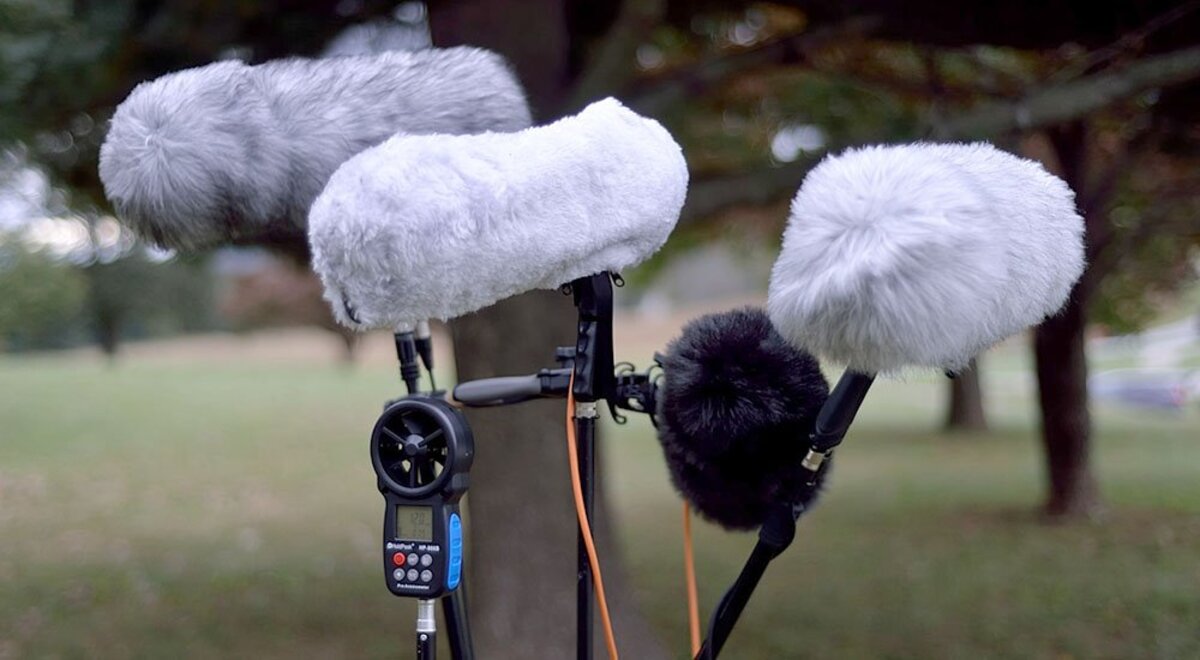Home>Instruments>Bass>What Does Bass Do


Bass
What Does Bass Do
Modified: January 28, 2024
Discover the role of bass in music and how it adds depth to your favorite songs. Explore the importance of bass and its impact on the overall sound.
(Many of the links in this article redirect to a specific reviewed product. Your purchase of these products through affiliate links helps to generate commission for AudioLover.com, at no extra cost. Learn more)
Table of Contents
Introduction
When it comes to music, an often underappreciated yet vital component is the bass. The bass not only adds depth and richness to a composition but also serves as the foundation upon which the entire piece is built. Whether it’s in a rock band, jazz ensemble, or even a symphony orchestra, the bass holds an integral role in shaping the overall sound and feel of the music.
So, what exactly is bass? In simple terms, bass refers to the lowest-pitched musical notes, typically played by an instrument known as the bass guitar or double bass. It provides the rhythmic and harmonic backbone of a song, acting as a bridge between the melody and the rhythm section. While it may often go unnoticed to the untrained ear, a well-executed bass line can make or break a song.
Bass acts as a driving force that connects all the different elements of a musical composition. It not only provides the rhythmic groove but also adds depth and texture to the overall sound. The low-end frequencies created by the bass give music a fuller and richer quality, adding a layer of complexity that enhances the listening experience.
Without the bass, the music would lack depth and feel incomplete. Imagine listening to your favorite song stripped of its bass guitar or double bass. It would sound thin, lacking the punch and groove that the bass provides. The bass not only anchors the sonic landscape but also allows the listener to physically feel the music resonating within them.
Despite its importance, the bass is often overshadowed by other instruments in the limelight. The guitar, drums, and vocals tend to take center stage, while the bass is often relegated to the background. However, skilled bass players know how to make their instrument shine, injecting personality and creativity into their playing.
Throughout this article, we will delve into the various roles, techniques, and influential bass players that have shaped the world of music. Whether you’re a musician yourself or simply a music lover, gaining a deeper understanding of the bass will open your ears to a whole new dimension and appreciation for the art of music.
Definition of Bass
Bass, in the context of music, refers to the lowest-pitched notes or sounds in a composition. It is commonly associated with instruments such as the bass guitar and double bass, both renowned for producing deep, resonant tones. The term “bass” can also be used to describe the lowest male vocal range in singing.
When it comes to musical notation, the bass clef, also known as the F clef, is used to represent the lower notes on a staff. This clef is mainly used for writing music for instruments such as the bass guitar, double bass, tuba, and cello, which predominantly play in the lower register.
The bass guitar, often referred to as the electric bass or simply the bass, is a stringed instrument that can be either plucked or played with a pick. It typically has four strings, tuned to the notes E, A, D, and G, from low to high. The bass guitar’s primary purpose is to provide the fundamental rhythm and groove in a band, bridging the gap between the drums and other melodic instruments.
On the other hand, the double bass, also known as the contrabass, is a larger and lower-pitched string instrument that belongs to the orchestral family. It is played with a bow or plucked with the fingers and is capable of producing rich, deep tones. The double bass is commonly found in classical music, jazz ensembles, and some forms of folk music.
Additionally, within vocal music, the bass voice type refers to the lowest of the male voices. Bass singers are recognized for their deep and resonant vocal timbre, allowing them to add a strong foundation and richness to choral or vocal performances.
In summary, bass is the foundation of the musical spectrum, providing depth, rhythm, and harmonic support. Whether in the form of a bass instrument or a vocal range, bass adds an essential element to music, enhancing its overall impact and creating a captivating sonic experience.
Role of Bass in Music
The bass plays a crucial role in shaping the overall sound and feel of music. It serves as the bridge between the rhythm section and the melody, providing a solid foundation upon which the composition can stand. Here are some key roles that the bass fulfills in different genres and musical contexts:
Rhythm and Groove: One of the primary roles of the bass is to establish and maintain the rhythm and groove of a song. It provides the essential pulse that drives the music forward, ensuring that everyone in the band stays in sync. The bass line, often played in a repetitive pattern, acts as a rhythmic anchor, allowing other instruments and vocals to weave their melodies.
Harmonic Support: In addition to its rhythmic function, the bass also provides harmonic support. It fills the lower frequencies of the musical spectrum, creating a foundation for the melody and chords to build upon. By outlining the harmonic structure of a song, the bass adds depth and texture, enhancing the overall musical composition.
Melodic Counterpoint: Although the bass is primarily associated with providing rhythm and harmony, it can also play a melodic role. Skilled bass players often incorporate melodic lines and embellishments, adding layers of complexity and interest to the music. These melodic flourishes can complement the main melody or create interesting counterpoints, contributing to the overall musical tapestry.
Emotional Impact: The bass has the power to evoke strong emotions in listeners. Its low, resonant tones can create a sense of depth and intensity, giving music a visceral quality. A well-executed bass line can enhance the emotional impact of a composition, eliciting feelings of joy, melancholy, or even suspense, depending on the context and style of the music.
Dynamic Control: The bass also plays a role in controlling the dynamics of a song. By varying the intensity and volume of their playing, bass players can shape the overall dynamics of a composition. They can introduce tension and release, add accents, and contribute to the overall energy and flow of the music.
In summary, the bass serves as the backbone of music, providing rhythm, harmony, and even melodic elements. It is responsible for establishing the groove, creating a solid foundation for other instruments to build upon, and evoking emotional responses in listeners. The role of the bass cannot be overstated; it is essential for the cohesion and impact of any musical composition.
The Importance of Bass Lines
Bass lines are a critical component of any musical composition. They provide depth, drive, and structure to the music, serving as a backbone for the melody, rhythm, and overall groove. Here are some key reasons why bass lines are of utmost importance:
Rhythmic Foundation: Bass lines establish the rhythmic foundation of a song. By outlining the rhythmic pattern and pulse, they give the music a solid and consistent groove. The bass works in conjunction with the drums to create a tight rhythmic framework, allowing other instruments and vocals to lock in and build upon it.
Harmonic Framework: Bass lines play a vital role in defining the harmonic structure of a composition. They help establish chord progressions and guide the listener’s ear, providing a framework for the melody and other instruments to follow. By outlining the underlying chords, the bass adds depth and richness to the musical arrangement.
Accentuation and Movement: Bass lines can add accents and create movement within a song. By emphasizing certain beats or playing melodic fills, they can add excitement and interest to the music. Well-crafted bass lines can create tension and release, leading the listener through the different sections of a song and enhancing its dynamic quality.
Creating Groove: One of the primary roles of the bass is to establish and maintain the groove of a composition. A well-executed bass line has the power to make people tap their feet and move to the rhythm. It acts as the anchor for the entire band, ensuring that everyone stays synchronized and connected to the rhythmic pulse.
Connecting Melody and Rhythm: Bass lines serve as a bridge between the melody and the rhythm section. They provide a sonic link that connects the two elements, adding coherence and unity to the music. By complementing and supporting the melody, the bass adds depth and texture, enhancing the overall musical experience.
Expressing Emotion: Bass lines can evoke strong emotions in listeners. The low frequencies produced by the bass have the power to convey a sense of depth and intensity in music. By playing with dynamics, articulation, and mood, bass players can add emotional nuance to a composition, enhancing its overall impact.
In summary, the importance of bass lines cannot be overstated. They provide the rhythmic and harmonic foundation, accentuate and create movement, establish the groove, connect melody and rhythm, and express emotional depth. The presence of a well-crafted bass line can make all the difference in elevating a song from good to great, making it an indispensable element in any musical arrangement.
Techniques for Playing Bass
Playing bass requires a unique set of techniques to achieve a solid and compelling sound. Whether you’re a beginner or an experienced player, mastering these techniques will take your bass playing to the next level:
Fingerstyle: Fingerstyle playing involves plucking the strings of the bass with the fingers of your right hand. This technique allows for greater control and versatility in shaping the sound. By using different fingers, you can vary the attack, tone, and dynamics, enabling you to create a wide range of musical expression.
Slap and Pop: Slap and pop is a percussive technique popularized by funk and slap bass players. It involves slapping the strings with the thumb and popping them with the fingers of the right hand. This technique produces a unique and rhythmic sound, adding a funky and syncopated groove to the music.
Palm Muting: Palm muting is a technique where you lightly rest the palm of your right hand near the bridge of the bass. This dampens the vibrations and creates a muted, percussive sound. It is often used to add punch and definition to fast-paced or heavy sections of music.
Octaves and Double Stops: Playing octaves involves simultaneously playing the same note on different strings at different octaves. This technique adds depth and richness to the sound, creating a fuller and more harmonically complex bass line. Double stops involve playing two notes simultaneously, creating chords or adding melodic embellishments to the bass line.
Hammer-ons and Pull-offs: Hammer-ons and pull-offs are techniques commonly used to create smooth and legato passages. A hammer-on involves plucking a string with one finger and then quickly pressing down on a higher fret with a different finger, producing a new note without plucking again. A pull-off is the opposite, where a note is “pulled” off by quickly releasing pressure from a higher fret to a lower one.
Slides: Sliding involves smoothly transitioning from one note to another by gliding your finger along the string. Slides can be used to add a seamless and expressive quality to the bass line. They can also be used to create melodic runs or connect different positions on the fretboard.
Chordal Playing: Chordal playing on bass involves playing multiple notes simultaneously to create chords. This technique is often used in jazz, fusion, and progressive genres to add harmonic complexity to bass lines. It requires precise finger positioning and coordination to execute accurately.
Walking Bass Lines: Walking bass lines are commonly used in jazz and blues. They involve playing a continuous line of quarter notes that outline the chord progression of a song. Walking bass lines add momentum and drive to the music, enhancing the rhythm and supporting the soloists.
These are just a few examples of the many techniques that bass players utilize. Experimenting with these techniques and incorporating them into your playing will expand your musical vocabulary and allow you to create unique and expressive bass lines.
Famous Bass Players
Throughout the history of music, there have been several influential and renowned bass players who have made significant contributions to the world of music. Here are just a few of the many famous bass players who have left a lasting impact:
James Jamerson: James Jamerson is considered one of the greatest bass players in the history of popular music. His work as a session musician for Motown Records in the 1960s and 1970s helped shape the sound of countless hit songs. His melodic and inventive bass lines can be heard on classics such as “What’s Going On” by Marvin Gaye and “My Girl” by The Temptations.
Paul McCartney: Paul McCartney, known for his role as the bassist in The Beatles, has had a profound influence on the world of music. McCartney’s melodic and innovative bass lines can be heard on iconic songs like “Come Together” and “Something.” His use of counterpoint and melodic embellishments elevated the bass from a rhythm instrument to a melodic force.
Jaco Pastorius: Jaco Pastorius revolutionized the role of the electric bass in jazz. His virtuosic playing and innovative use of harmonics and chordal techniques pushed the boundaries of what was possible on the instrument. Tracks like “Portrait of Tracy” showcased his incredible technical ability and musicality.
Flea: Flea, known as the bassist for the Red Hot Chili Peppers, is recognized for his high-energy playing style and funk-inspired bass lines. His aggressive and slap-heavy approach can be heard on songs like “Give It Away” and “Higher Ground.”
John Entwistle: John Entwistle of The Who was known for his powerful and complex bass playing. His fast and intricate bass lines, showcased in songs like “My Generation” and “Baba O’Riley,” added a unique dimension to the band’s sound and influenced generations of bass players.
Geddy Lee: Geddy Lee of Rush is often cited as one of the most skilled bass players in the rock genre. His melodic and technical prowess, combined with his distinctive high-register playing style, can be heard on tracks like “Tom Sawyer” and “YYZ.”
Victor Wooten: Victor Wooten is renowned for his virtuosic bass playing and innovative approach to the instrument. His ability to seamlessly blend complex jazz and funk techniques with melodic sensibility can be heard on songs like “Amazing Grace” and “More Love.”
These are just a few examples of the many influential bass players who have made their mark on the music world. Each of them has contributed to the evolution of bass playing, inspiring generations of musicians and pushing the boundaries of what can be achieved on the instrument.
Conclusion
The bass is an essential component of music, often overlooked but crucial for creating a cohesive and impactful sonic experience. It provides the rhythmic foundation, adds depth and texture, and connects the melody with the rhythm section. Whether it’s the driving force in a rock band, the pulse in a jazz ensemble, or the foundation of a symphony orchestra, the bass plays a vital role in shaping the overall sound and feel of music.
We have explored the definition of bass and its various forms, from the bass guitar to the double bass. We have also discussed the important roles that the bass fulfills in music, such as establishing the rhythm and groove, providing harmonic support, and creating melodic counterpoints. The bass has the power to evoke strong emotions and control the dynamics of a song, enhancing its overall impact.
We have also delved into the techniques used in playing bass, from fingerstyle to slap and pop, exploring various ways to express oneself on the instrument. Additionally, we have highlighted some of the most famous bass players who have shaped the world of music with their innovative playing styles and influential contributions.
It is important to recognize the significance of the bass and to appreciate the artistry involved in playing this often-underappreciated instrument. Whether you are a budding musician or simply a music lover, gaining an understanding of the bass will open your ears to a whole new realm of musical possibilities and deepen your appreciation for the complexities of music.
So, next time you listen to your favorite song, pay attention to the bass. Notice how it moves and grooves, providing the foundation and creating a rich, resonant sound. The bass is the hidden force that connects the various elements of the music, adding depth, emotion, and excitement. It is truly a fundamental and indispensable component that deserves recognition and admiration.











